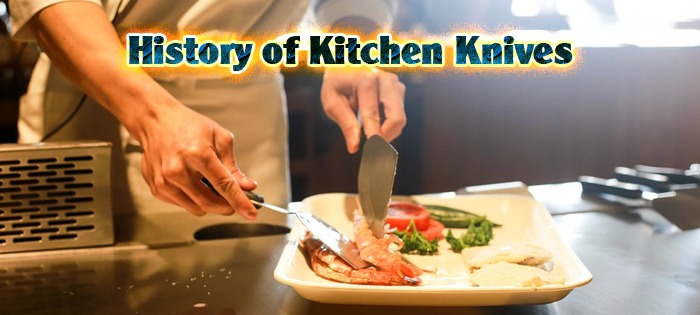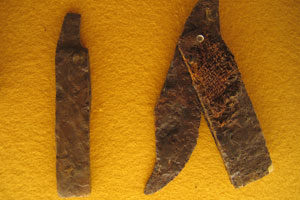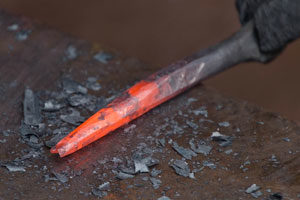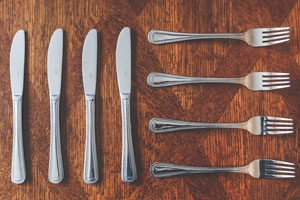The knife is one of mankind’s oldest and the most basic tools, from which all other types of knives or any other cutting tools were created.
It is little wonder that the knife is one of the most versatile utilitarian tools, whose variety of uses run the gamut from survival to construction to weaponry to the preparation of food.
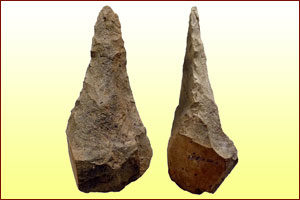 Before knives were invented, the prehistoric men used small stones or pebbles mainly to cut the carcasses of animals. During the Stone Age, the prehistoric men struck two stones together and sharpened one of those stones to create crude cutting edges — the resulting product became the world’s first-ever knife.
Before knives were invented, the prehistoric men used small stones or pebbles mainly to cut the carcasses of animals. During the Stone Age, the prehistoric men struck two stones together and sharpened one of those stones to create crude cutting edges — the resulting product became the world’s first-ever knife.
Later in the prehistoric era, mankind went on to improve in making stones into various tools, including knives of course. They also fashioned these stones in a certain way so that they would turn them into knives with serrated edges. But as the Iron Age loomed, metals totally replaced stone as a material of choice in making knives and other sharp or pointed tools. Metallurgy is actually a very ancient process whose origins date back during the 5th and 6th B.C. The discovery of iron refining became one of the breakthroughs in ancient metallurgy, as the process produced cast iron which could be molten, shaped into a particular mold and made into a variety of tools from cooking pots to knives, which came in single- or double-bladed forms.
The development of steel metallurgy in Medieval Europe had become so advanced compared to thousands of years ago that by then, people had been using daggers, small swords and bigger tools and weapons such as axes, swords and spears. But despite those advancements, the use of knives as a utensil for cutting food was not in wide practice just yet. There was an indication that only the wealthy people used knives for a double purpose — as an eating utensil and as a weapon for self-defense. It is being said that the first real kitchen and table knives came into existence during the early 17th century. They were most likely invented by an unknown craftsman who wanted to diversify his wares and boost his sales.
However, people would encounter big problems when using iron knives. One, they rusted too easily and two, they would break apart especially when used too often or used on tougher jobs. So to prevent rusting, they refined iron and added other elements, creating a new alloy called steel which had a higher amount of carbon. England was the first to develop an stronger type of stainless steel. It was designed to make the knife blades sharper, more durable and more resistant to staining, corrosion and rusting. That’s why steel was (and is still) being used to make knife blades.
Kitchen and table knives with blunt tips and single blades were popular especially during the era of the French king Louis XIV. The use of such table knives soon became widespread not only in France but also in the rest of Europe. The advent and popularity of four-tined curved dining forks also reduced the need for sharp-tipped knives and otherwise led to an increase of use of blunt-tipped, single-bladed knives during that time.
By the 20th century, table knives had become standardized due to the advancements on stainless steel. Further developments on metallurgy and other related fields had led to the improvement of knife blades, which come in a variety of forms, profiles and specific usage. Modern kitchen knives come in different materials (apart from steel) such as ceramic, titanium and plastic, among others.
 Did you know that there are actually names for the parts of a knife? Let’s delve deeper into our knife education by knowing its parts:
Did you know that there are actually names for the parts of a knife? Let’s delve deeper into our knife education by knowing its parts:
- Spine – the back of the blade
- Point – the sharp and tapered end of the knife
- Edge – the sharp part of the knife, the blade itself — the one that does most of the chopping, cutting, mincing, etc.
- Tip – the part between the point and the edge of the knife. It is used mostly for detailed or delicate cutting.
- Heel – the lower part of the blade.
- Bolster – the thick part that connects the knife handle and the blade which keeps your hand from accidentally slipping onto the blade (in case your hand gets wet or slippery).
- Scale – the handle of the knife
- Tang – the unsharpened part of the blade that extends which the scale is attached to.
- Rivets – these are fasteners that join the scale to the tang, forming the handle.
- Butt – the end of a knife’s handle.
Here are some of the more common types of kitchen knives:
- Bread knife – it has a serrated edge that allows for evenly cutting bread without crushing or breaking it.
- Butter knife – typically, butter knives are table knives with a dull, rounded tip. The edges can be finely serrated or non-serrated at all.
- Carving knife – it is a big knife which is used to cut thin, delicate slices of meats and fish.
- Butcher knife – it is a knife specifically designed for butchering animal carcasses. It is also used in dressing the meat.
- Boning knife – it is used for removing bones from the meat. It is also called “cleaver.”
- Oyster knife – it has a short, thick blade specifically made for prying oyster shells open.
The knife is indeed one of the best kitchen gadgets that everyone cannot live without — from the casual homemaker to the most passionate foodies to professional chefs.
To buy the best kitchen knives, check out customer kitchen gadget reviews — they’re likely to recommend excellent places to get kitchen gadget deals, including the best set of knives for an affordable price.

